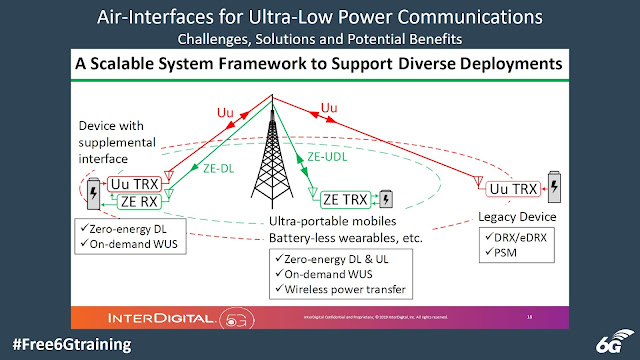IoT, especially cellular IoT was promised a huge market by the time 5G rolled out commercially but as I discussed in another blog post, the cIoT market is quite small. Along with connectivity challenges, power is another area of concern. I say concern because while the standards are coming up with techniques to reduce power consumption, the batteries that may be left behind after the devices run out of power could be a huge source of pollution.
In an earlier post I looked at how NTT Docomo is working towards future devices that can keep working without the need to charge. It might still have a battery though. In another post we saw how researchers at the Georgia Institute of Technology have discovered a way to tap into the over-capacity of mmWave 5G networks, turning them into “a wireless power grid” for powering Internet of Things (IoT).
At MWC 2021, Orange demonstrated 'Crowd-Detectable Zero-Energy-Devices', where a connected device was:
Firstly, it is self-powered using ambient energy such as light energy from artificial lighting or the sun.
Secondly, to communicate, it recycles existing signals, or those already used for communications between smartphones and the network. These signals are transported in the form of waves.
Finally, it can be detected by the ambient network. Indeed, when the device is near a smartphone connected to the mobile network, the smartphone detects it in the same way as it detects the network and can serve as its “communication gateway”. Likewise, the network also detects the device, just as it detects the smartphone, and can therefore also act as its “communication gateway”.
Ultimately, this new type of device can connect without an energy source, using zero additional waves or infrastructure. For simplicity, we'll call it “000Device”.
You can read more about it in their MWC21 press release here. You can also watch the video of the demo here.
Back in July, Ericsson and MIT announced that they will collaborate on variety of topic, one of which was "Advances in hardware could lead to “zero-energy” devices able to harvest energy directly from the received radio signal and use it to connect to the mobile network". In a recent blog post they detail how "Ericsson and MIT have teamed up to find out how zero-energy devices could harness energy from their surroundings – and transform industries in the process".
I was also reminded of this presentation from Interdigital back in 2019. In that, Interdigital talked about Zero-Energy Air Interface that may play a role in 6G and even 5G-Advanced:
On demand features will have to be introduced to the 3GPP/NR system framework using a new class of “zero energy” (ZE) air interfaces that concurrently deliver power and information to devices. Ultra low power receivers that consume few 10s of nanowatt power and are capable of macro like link budgets will need to be developed. Using these new PHY & MAC concepts a scalable system framework will have to be developed and integrated into future cellular networks!!
Once the 3GPP Release-18 feature list is available, we may be able to see if this made it into the standards or we will have to wait longer.
If you are researching this topic then please check-out the resources listed below.
Related Posts:
- Free 6G Training: NTT Docomo's revised '5G Evolution and 6G' White Paper
- Free 6G Training: Leveraging mmWave 5G to Wirelessly Power IoT Devices
- Free 6G Training: Monitoring Health with Skin patch and Smartwear
- Connectivity Technology Blog: InterDigital’s 6G Vision of “Zero-energy” (ZE) air-interface designs
- The 3G4G Blog: Introduction to 5G Reduced Capability (RedCap) Devices
- Connectivity Technology Blog: The Wide Variety of Internet of Things (IoT) Technologies for Different Situations
- The 3G4G Blog: 5G Non IP Data Delivery and Lightweight M2M (LwM2M) over NIDD
- The 3G4G Blog: Mobile Initiated Connection Only (MICO) mode in 5G System
- The 3G4G Blog: Embedded SIM (eSIM) and Integrated SIM (iSIM)
- The 3G4G Blog: Are there 50 Billion IoT Devices yet?
- 3G4G: Internet of Things (IoT) and Machine-2-Machine (M2M)




Comments
Post a Comment